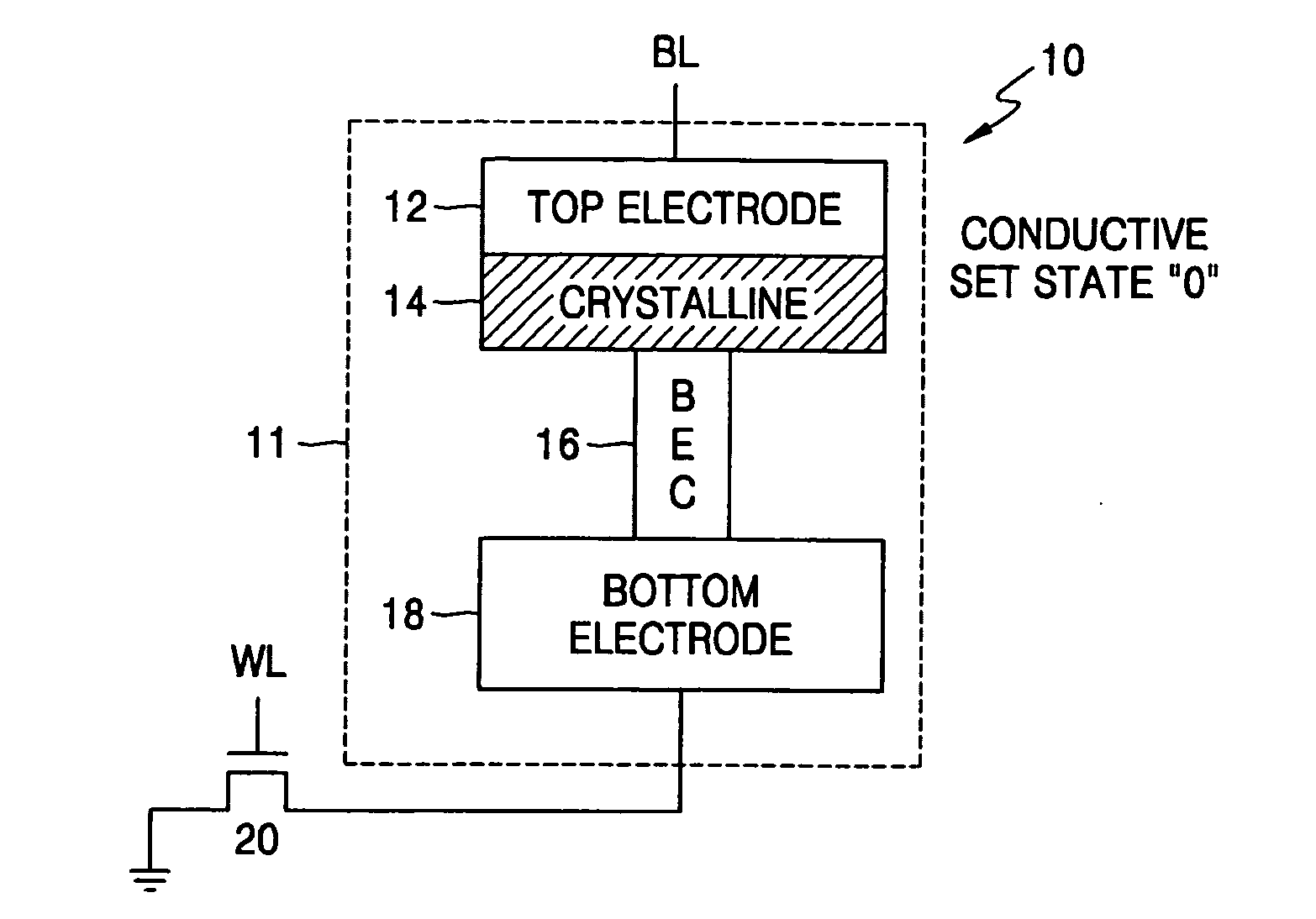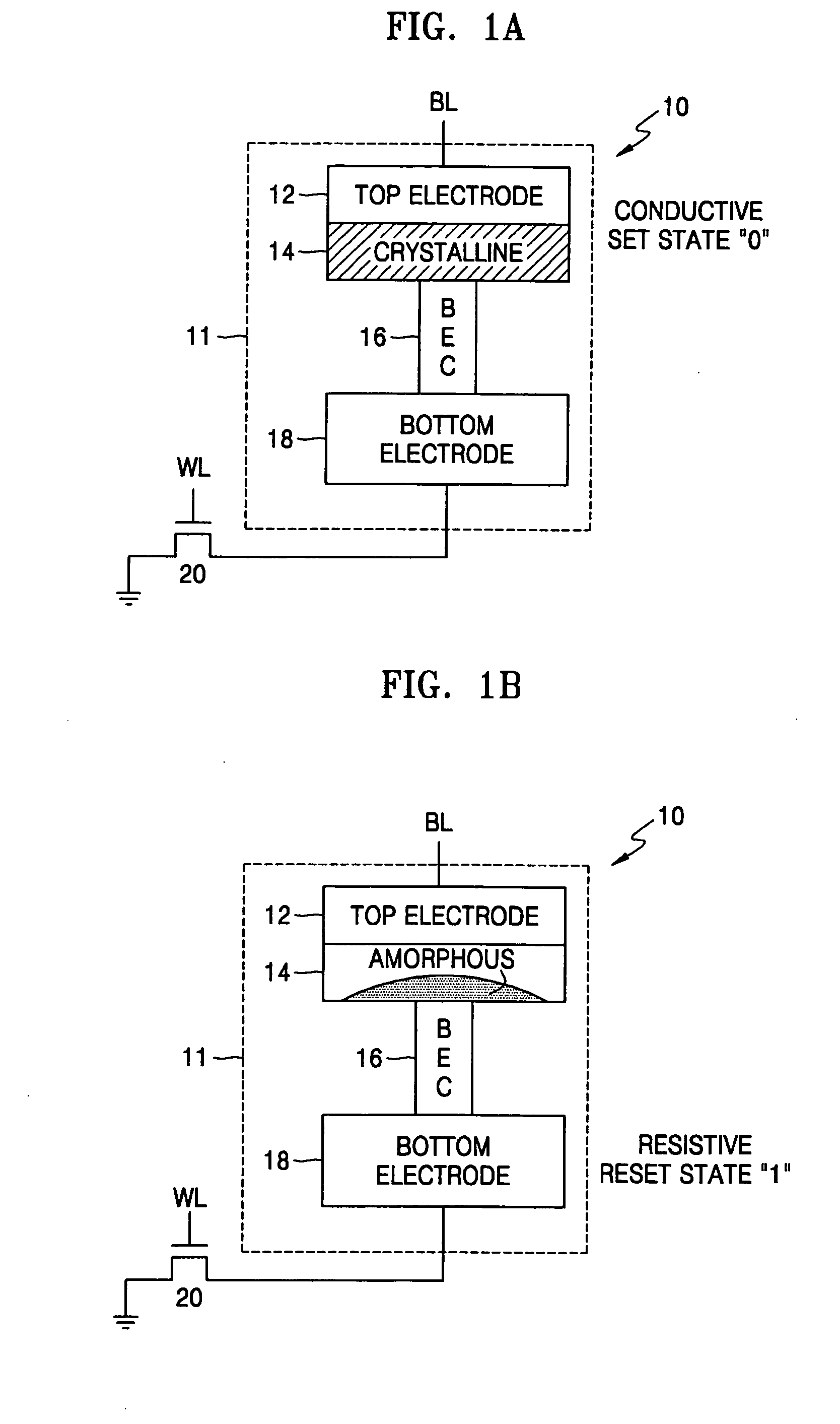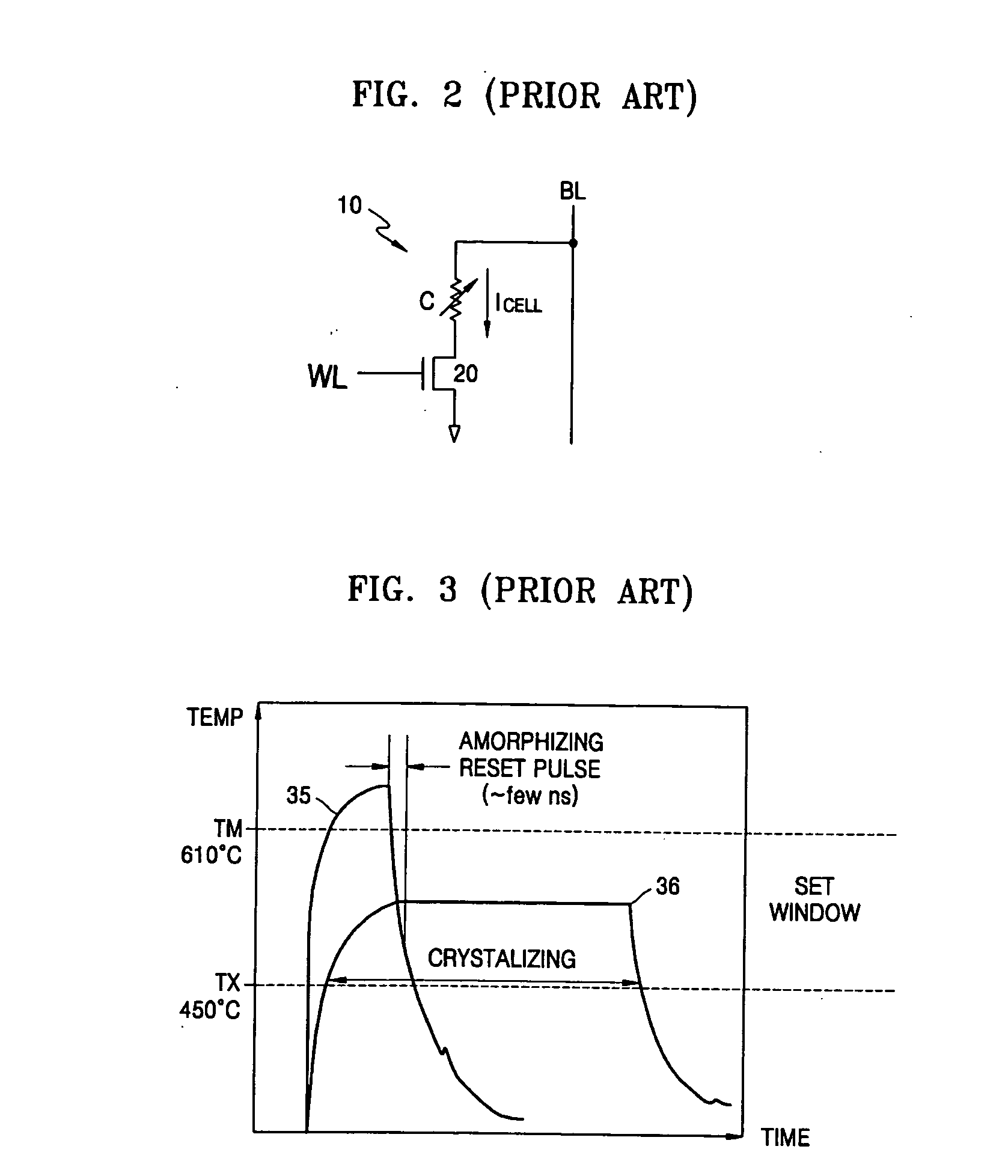Method of programming memory cell array
a memory cell array and programming method technology, applied in the field of semiconductor memory, can solve the problem of high failure rate of crystallization during programming of phase-change memory cells
- Summary
- Abstract
- Description
- Claims
- Application Information
AI Technical Summary
Benefits of technology
Problems solved by technology
Method used
Image
Examples
Embodiment Construction
[0031] Hereinafter, the present invention will be described in detail with reference to exemplary but non-limiting embodiments of the invention. It should be noted that the drawings are presented for illustrative purposes only, and are not necessarily drawn to scale.
[0032] Reference is initially made to FIGS. 5A and 5B which respectively illustrate portions of memory cells 40 and 50 which, as a result of process variations, have bottom electrode contacts of different sizes.
[0033] In particular, FIG. 5A illustrates a first memory cell 40 having a top electrode 42, a phase-change material 44, and bottom electrode contact (BEC) 46. FIG. 5B illustrates a second memory cell 50 having a top electrode 52, a phase-change material 54, and a BEC 56. As is schematically shown, the BEC 56 of the second memory cell 50 is wider than the BEC 46 of the first memory cell 40.
[0034] The ‘set’ current pulses and ‘reset’ current pulses are applied to the phase-change material 44 / 54 through the BECs 4...
PUM
 Login to View More
Login to View More Abstract
Description
Claims
Application Information
 Login to View More
Login to View More - R&D
- Intellectual Property
- Life Sciences
- Materials
- Tech Scout
- Unparalleled Data Quality
- Higher Quality Content
- 60% Fewer Hallucinations
Browse by: Latest US Patents, China's latest patents, Technical Efficacy Thesaurus, Application Domain, Technology Topic, Popular Technical Reports.
© 2025 PatSnap. All rights reserved.Legal|Privacy policy|Modern Slavery Act Transparency Statement|Sitemap|About US| Contact US: help@patsnap.com



